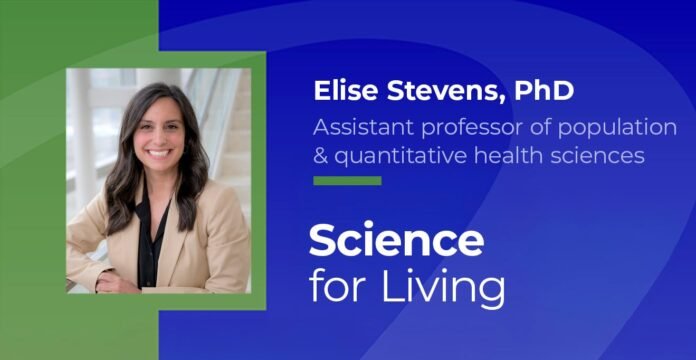
Photo: Faith Ninivaggi
Oral nicotine pouches—small, smokeless, nearly invisible and placed between the lip and gum—are rapidly gaining popularity among teens, sparking new concerns from public health experts.
“Nicotine pouches are really discreet and easy to use. Young people use them without parents and teachers noticing,” said Elise Stevens, PhD, assistant professor of population & quantitative health sciences and director of the Center for Tobacco Treatment Research and Training at UMass Chan Medical School. “That’s part of what makes them so dangerous.”
What are the numbers showing?
Although oral nicotine pouches have been on the market since 2016, sales have surged dramatically in recent years. In 2016, approximately 100,000 units were sold. By 2020, that number soared to 46 million. The top-selling brands, Zyn, On!, Rogue and Velo, are owned by big tobacco companies.
Much like e-cigarettes, nicotine pouches have benefited from strategic marketing on social media platforms. Influencers, who often have large followings on social media, are promoting the products, sometimes without disclosing that they are being paid to do so. Early research shows that teens may trust and like the products more as a result of seeing them on social media, even when it is disclosed that the social media posts are paid advertising.
“We’re trying to understand why disclosure doesn’t deter interest,” said Dr. Stevens. “It might be that teens see honesty as a form of trustworthiness. But either way, it’s making our job—to protect and inform young people—harder.”
What worries experts the most?
Beyond the rise in popularity, there’s concern over how early use of nicotine pouches may lead to addiction and even riskier behaviors.
“There’s evidence that using one nicotine product makes you more likely to try others or at least view other nicotine and tobacco products as less harmful,” Stevens said. “Even if a teen switches from vaping to pouches, they’re still on a trajectory that could lead to smoking or other substance use.”
While pouches may carry fewer health risks than cigarettes or vapes, they are not harmless, especially for developing brains. Studies point to concerns over cognitive effects, memory disruption, cardiovascular disease, and oral and neurological problems.
What’s drawing teens in?
Teens say they like being able to conceal using the nicotine pouches since they place them under the lip. They also cite stress relief, peer influence and savvy marketing for what’s making the pouches more popular. With adolescent mental health struggles on the rise, many teens turn to nicotine as a coping tool, she said.
“We have a mental health epidemic among young people,” said Stevens. “And unfortunately, substances like nicotine become a way for teens to cope.”
In Massachusetts, flavored nicotine sales are banned from retail stores. Yet teens are finding creative ways to access flavored pouches: via older siblings, social media sales networks or across state lines.
“Some kids are buying from older siblings or strangers online and we’re still trying to track exactly how widespread that is.”
Why is it so difficult to regulate?
Regulating nicotine pouches poses challenges, especially online. Social platforms are flooded with unmonitored promotional content, often fueled by complex influencer-marketing deals.
“We’re seeing health misinformation explode online,” said Stevens. “Much of the health content teens encounter on social media platforms is inaccurate and they’re using it to make real decisions.”
Additionally, the nicotine in these products is synthetic, which makes it harder to regulate within existing industry standards.
What can parents and educators do?
Because nicotine pouches are so easy to conceal, they often go unnoticed. Teachers and parents may only spot subtle signs like lip bulges or mild nausea. Relying on honest conversation and asking questions could be helpful.
“Have open, nonjudgmental conversations. Kids are more likely to talk if they don’t feel punished. Education and support are key.”
What can help educate teens on this?
This rise in nicotine-pouch use highlights a deeper disconnect: the gap between public health messaging and actual teen behavior. Experts emphasize the need to meet youth where they are, especially online, with relatable stories and nuanced information.
“Teens are pretty savvy,” Stevens reminds. “But even the smartest of us can get duped by an influencer. I’ve bought things from Instagram, too. That’s how powerful this stuff is.”
Related media:
Boston Globe: Are nicotine pouches like Zyn healthier than cigarettes? Here’s what you need to know.






